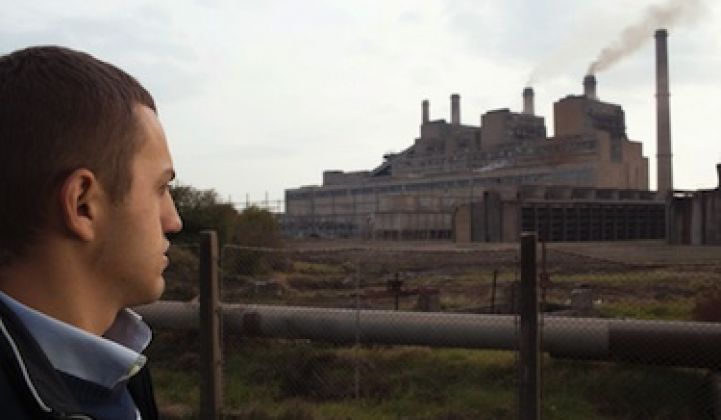The World Bank announced last week that is largely turning away from providing funding for coal-fired power plants, except in rare situations where there is no feasible alternative.
In the World Bank’s latest policy directive, Energy Sector Directions Paper, the organization said that in an effort to bring energy access to the more than 1 billion people that live without it, the priority would be affordable and reliable energy.
“Grid, mini-grid, and off-grid solutions will all be pursued for electricity. In rural, remote or isolated areas, off-grid solutions based on renewable energy combined with energy-efficient technologies could be the most rapid means of providing cost-effective energy services," wrote the Bank.
There is still an open question of just how sustainable the World Bank’s energy investments will be. The policy paper also put large hydropower back on the table, even though many environmentalists argue there are other options.
“The World Bank ignores that better solutions are readily available,” Peter Bosshard of advocacy group International Rivers told Reuters. "In the past 10 years, governments and private investors installed more new wind power than hydropower capacity."
The same could be said of Kosovo, where the World Bank is considering loan guarantees for a coal-fired power plant. Jigar Shah, founder of SunEdison, argued on Greentech Media that Kosovo also has other resources to meet the 600-megawatt energy shortfall.
“European investors have already proposed over 200 megawatts of privately funded wind energy investments in Kosovo,” he wrote. “This shows that industry is ready to move at the scale needed to put clean energy to work in Kosovo today.”
World Bank president Dr. Jim Yong Kim has called for action on climate change since taking the helm last year. In the World Bank’s Environment Strategy 2012-2022, the working group suggested greenhouse gas emission analysis when evaluating investment lending for energy, transportation and forestry projects.
“The critical importance of shifting the global energy sector to a more environmentally sustainable development path has never been greater,” the World Bank stated in the energy sector paper.
Despite the resolve, the paper also calls for quick, low-cost options to those without energy access: “The argument for supporting the lowest-cost -- and hence the most affordable -- option to meet critical needs in the near term is particularly strong when extending access to those without modern energy.”
In the past, the World Bank has vastly underestimated some countries’ potential for renewable energy. And while the bank said it was open to supporting higher-cost projects that had smaller environmental footprints, it noted they would have to come with concessional finance to cover the incremental costs or strong client demand.
But many of the world’s poor are already paying high prices for electricity. The World Bank noted that many countries in sub-Saharan Africa pay about $0.20 to $0.50 per kilowatt-hour, compared to the U.S. average of about $0.11 per kilowatt-hour. For one project out of Columbia University, SharedSolar, the cost of a scalable microgrid can be cost-competitive for rural villages that do not have access to the grid.
To get the most bang for its buck, the World Bank says that it will focus more on energy efficiency, and in particular removing barriers to energy efficiency investment. Where possible, the bank said it would work on energy market reform and removing subsidies that create a skewed playing field.
The move by the World Bank comes on the heels of President Obama announcing that the U.S. would stop investing in coal-fired power plants overseas. Despite the visibility of the World Bank, however, the multilateral institution estimates that the $8 billion it spends annually on energy projects is less than 1 percent of what would be needed to meet the goals of the United Nation’s Sustainable Energy for All initiative, which aims to double the share of renewables globally, double the rate of energy efficiency and ensure universal access to sustainable energy to all by 2030.



